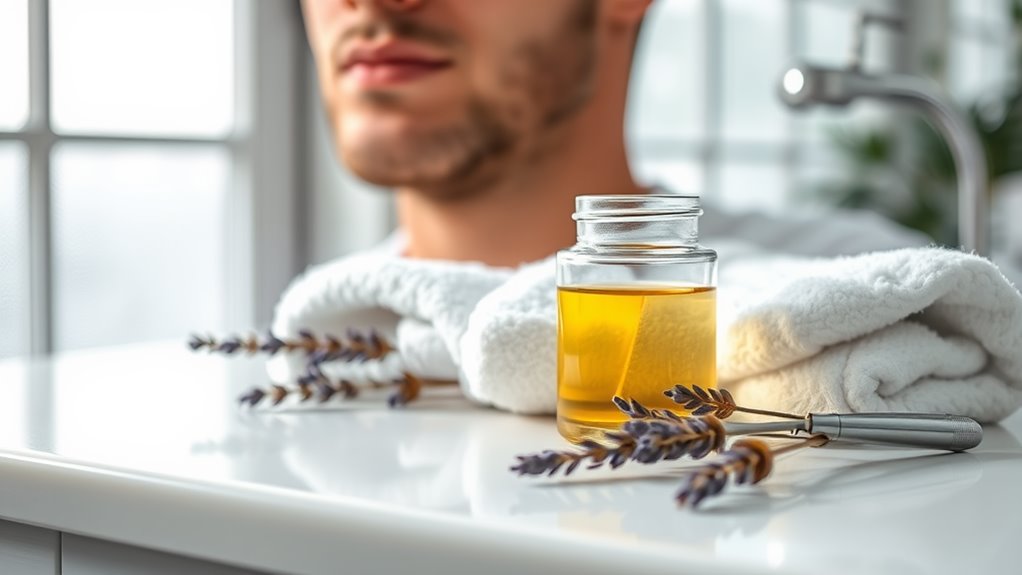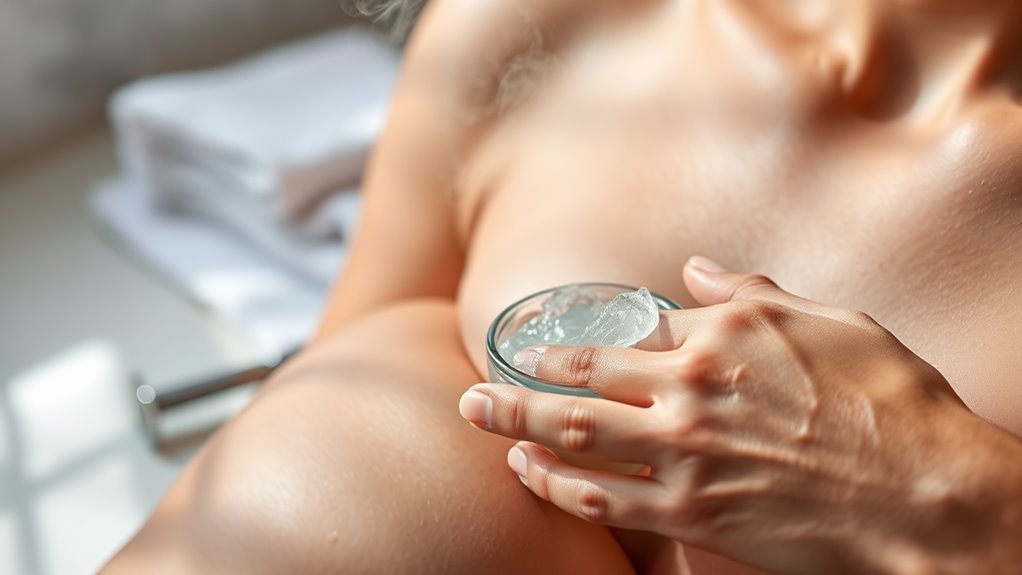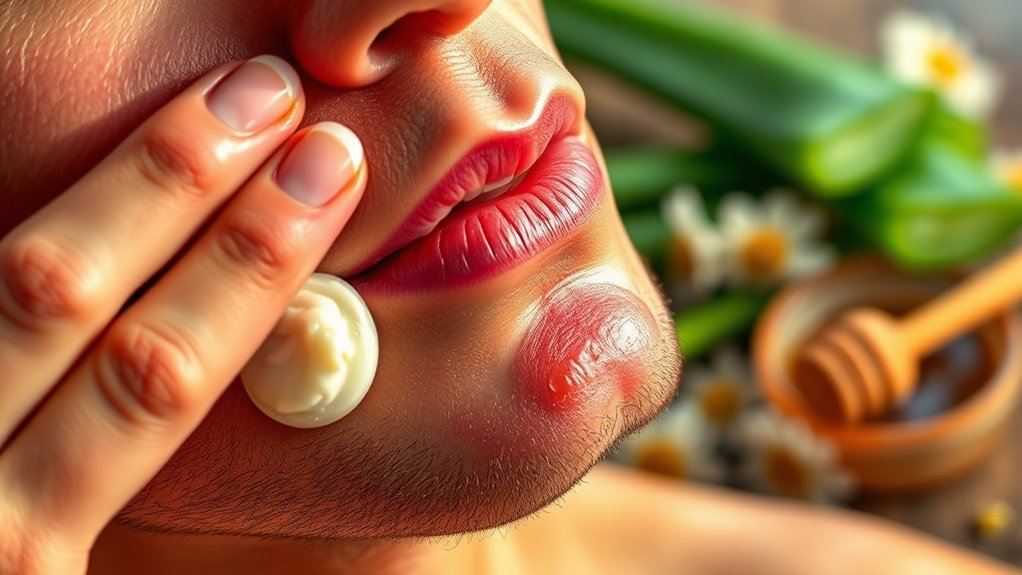Say Goodbye to Razor Burns Forever With This Trick!
To say goodbye to razor burns forever, start by prepping your skin with warm water and quality shaving cream. Always shave in the direction of hair growth using a sharp, clean razor. Rinse the blade often and apply soothing remedies like aloe vera or coconut oil afterward. Don’t forget to exfoliate weekly and moisturize daily to keep your skin healthy! Want to uncover more tips for a smoother shave? There’s plenty more to explore!
Understanding Razor Burns: Causes and Symptoms
Razor burns affect many people, especially after a close shave. You might notice redness, irritation, or even tiny bumps on your skin following the experience.
These symptoms can make you feel uncomfortable and self-conscious, but understanding the causes is the first step toward relief. Often, it’s caused by using dull blades, shaving too quickly, or going against the grain of your hair, which can lead to inflammation.
If you’ve ever felt that stinging sensation or seen those pesky red marks, you’re not alone. Many others share your struggle, and it’s vital to recognize that these reactions are normal.
Essential Shaving Techniques to Prevent Razor Burns
To keep your skin smooth and irritation-free, mastering proper shaving techniques is key.
First, always start with a clean, damp face to soften your hair. Use a quality shaving cream or gel to create a protective barrier.
When you shave, follow the hair growth direction—this reduces friction and minimizes the risk of irritation. Don’t rush; take your time and use light, gentle strokes. Rinse your blade frequently to keep it clean and effective.
After shaving, rinse your skin with cool water to close the pores. Finally, finish with a soothing aftershave balm to hydrate and protect your skin.
Natural Remedies for Soothing Irritated Skin
How can you quickly soothe irritated skin after a shave? You’ve got some fantastic natural remedies at your fingertips!
First, reach for aloe vera gel; its cooling properties work wonders to calm redness and inflammation. If you have coconut oil, apply a thin layer to hydrate and protect your skin.
You can also mix a few drops of tea tree oil with a carrier oil for its antibacterial benefits, reducing irritation. Chamomile tea bags, cooled and pressed onto your skin, can bring instant relief too.
Lastly, don’t underestimate the power of honey—its natural healing properties help repair and soothe.
Embracing these remedies not only helps you feel better but connects you with a community that values natural care.
Step-by-Step Guide to a Perfect Shave
Achieving a perfect shave involves five essential steps that can elevate your grooming routine. Follow this guide for a smooth and satisfying experience:
| Step | Description |
|---|---|
| Prepare Your Skin | Wash your face with warm water to soften hair. |
| Apply Shaving Cream | Use a quality cream for a smooth glide. |
| Use the Right Razor | Choose a sharp, clean razor for the closest shave. |
| Shave with Care | Shave in the direction of hair growth. |
| Aftercare | Rinse with cool water and apply a soothing balm. |
Long-Term Prevention Tips for a Burn-Free Experience
While a good shaving technique is crucial, long-term prevention of razor burn requires a few additional habits that can keep your skin healthy and irritation-free.
By incorporating these practices into your routine, you’ll not only enjoy a smoother shave but also foster a sense of community with others who prioritize skincare.
- Use a gentle exfoliant**** weekly to remove dead skin cells.
- Moisturize daily with a hydrating lotion tailored to your skin type.
- Limit hot showers to avoid stripping your skin’s natural oils.
- Choose the right razor—replace blades frequently to ensure a clean cut.
Frequently Asked Questions
Can I Use an Electric Razor to Prevent Razor Burns?
Yes, you can use an electric razor to help prevent razor burns. They’re designed to glide smoothly over your skin, reducing irritation. Just remember to keep your skin moisturized for the best results!
How Often Should I Replace My Razor Blades?
You should replace your razor blades every 5 to 7 shaves, or when they feel dull. Keeping your blades sharp not only gives you a smoother shave but helps prevent irritation and razor burns too.
Are There Specific Skin Types More Prone to Razor Burns?
Yes, certain skin types are more prone to razor burns. If you’ve sensitive or dry skin, you’re likely to experience irritation. Adopting a gentle shaving routine can help minimize discomfort and keep your skin healthy.
Is It Safe to Shave Against the Grain?
Shaving against the grain can give you a closer shave, but it might increase your risk of irritation and razor burn. If you’re prone to sensitive skin, consider shaving with the grain for better comfort.
Can Diet Affect My Chances of Getting Razor Burns?
Yes, your diet can affect your skin health, which in turn influences your chances of getting razor burn. Eating a balanced diet rich in vitamins and hydration helps maintain your skin’s resilience and overall health.





